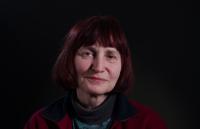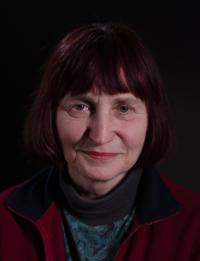„Communist manifestations showed me the substance of regime’s schizophrenia.“
Dana Kyndrová was born on 4 April 1955 in Prague. From 1964 to 1966 she lived with her parents in Algeria where she studied French. She later graduated with degrees in the Russian and French languages at Faculty of Philosophy and Arts, Charles University in Prague. She made a living as a tourist guide and language teacher (until 1989 at the Czech Technical University, then at the Academy of Performing Arts). Ever since high-school, she enjoyed taking photographs, among her most frequent subjects during normalization were the communist manifestations which she began documenting in 1973. After spending six months in Togo in 1975, she organized her first exhibition. In 1978 under the leadership of Anita Fárová she got involved in a photography project of students of the Academy of Performing Arts, attempting to capture the disappearing Žižkov quarter in Prague. Since 1986, she regularly participated in anti-communist demonstrations which she also took pictures of. Ever since 1993, she has been a professional photographer. She published two books: Irredeemable Faith in a Better Future; and 1945 Liberation... 1968 Occupation: Soviet Armies in Czechoslovakia. She organized exhibitions Liberation, Occupation, Departure; or Czech Fated Dates.


